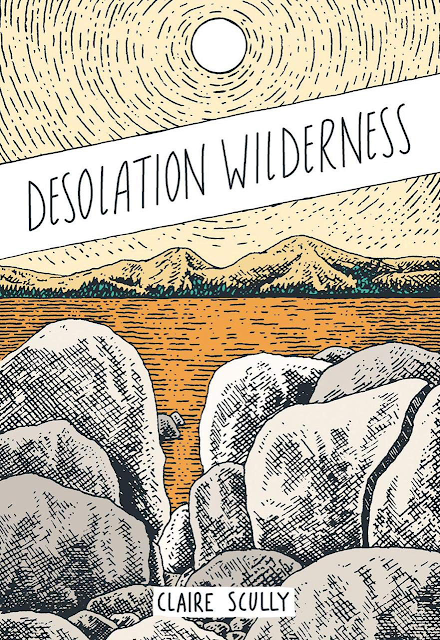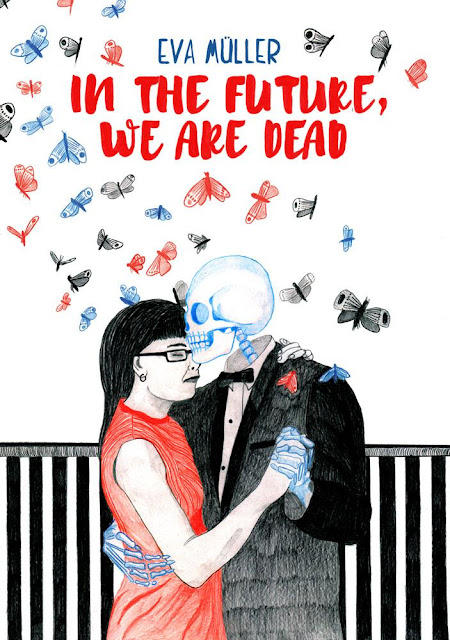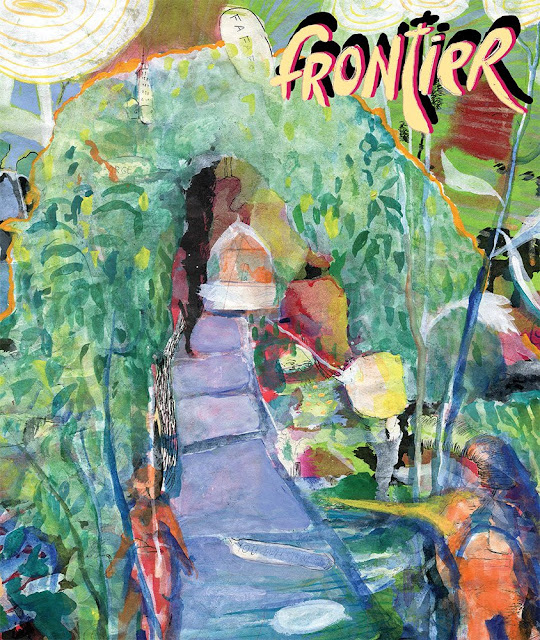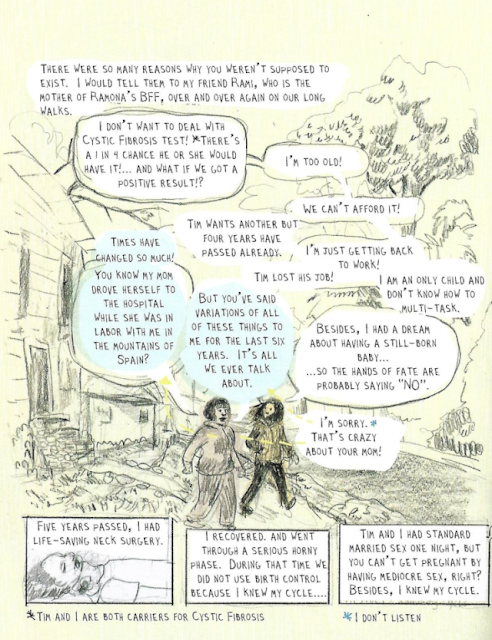
Have you ever sat at the edge of your bed in the morning, half awake and far more than half stuck in a dream? Maybe you didn’t sleep well the night before and your brain and muscles just did not want to work. They got you into a sitting up position but the rest was up to you without the energy to do anything but fall back down into your bed. Your mind was trying to will you up as it tries to organize the sensations around you. Even at that time in the morning, a nagging feeling that the day was already shot and you may just as well give up crept into the back of your mind. For the last number of years, Kevin Huizenga has been fascinated by sleep or, more precisely, the lack of sleep. His multi-year, six-issue series Ganges simulated all the jumbled thoughts that run through your head when you can’t sleep. But for every sleepless night, there’s the morning when you need to get up and for that, Huizenga’s newest comic Fielder #1 is the cold dose of reality that reminds you that a peaceful sleep is still hours away as you have to get through a very real day.
In these pre-waking moments, our minds are capable of playing odd tricks on us. For Huizenga, that odd trick is recreating an old Sam Glanzman comic in spirit if not in reality. “Bona” riffs on old 1960s comics and sci-fi, telling the story of a modern scientific family trapped in the ancient past of Neanderthals and dinosaurs. In a lot of his comics, Huizenga is fascinated with the language of comics, but in this opening story he seems far more interested in the straight out adventure of comics than any of his previous work has hinted at. Glanzman’s Kona debuted in early 1962, three years later than the 1959 that Huizenga credits “Bona” as being from. While an easy detail to overlook in Fielder #1, that date discrepancy hints strongly at the cartoonist’s lack of desire to create a history of comics as opposed to cartooning a comic that explores what comics can do with history and the past. All through this issue, Huizenga rewrites the history of comics, including his own history as a cartoonist in a later piece. As a storyteller, Huizenga is his own unreliable narrator. These are comics; they’re made up. They draw inspiration from life, games, and other comics, but these aren’t life, games, or other comics. Huizenga synthesizes all of those, taking them in and working out his own neuroses on the comic page.

Alternating with the “Bona” stories, Huizenga returns to his Everyman character, Glenn Ganges. Starting a new story, “Fielder, Michiana,” Huizenga seemingly picks up from where his last series, Ganges, left off and explores the disorientation of waking up after a troubled night of sleep. For much of the story, Glenn sits at the edge of his bed, trying to will himself to stand up before his brain can even fully function. The narrator turns our intrusion into Glenn’s morning into a Wild Kingdom episode, providing order for the reader and even encouragement to Glenn, as Huizenga’s drawings map out the disorientation and heaviness that come along with that waking tiredness. Huizenga’s prose offers stability even as his drawings keep us as disoriented as the character. As we hear the calming, orderly words of the unseen narrator, Huizenga’s cartooning diagrams the restless heaviness and uncertainty that comes with waking up in the morning.
But Fielder #1 isn’t history, nor is it autobiography, but at times Huizenga cartoons with such a personal voice that it’s hard not to imagine his long-time character Glenn Ganges as a slightly altered version of himself. Part of that is a lingering effect from past Glenn Ganges comics, where Huizenga transferred some elements of his own life to the comic character. Glenn has never been Huizenga, but there are more than a few similarities between the cartoon and the cartoonist. It is easy to get mixed up between reality and fiction in parts of this comic as Huizenga draws from a personal perspective. But when you get beyond the need to classify parts of this as fiction and nonfiction (especially when it’s all fiction), you can start to see these stories not so much in the terms of comic narratives but as comic forms. The “Bona” stories, a remixing of older comics, are one example of that form; the more personal Glenn Ganges stories are another example of the comic form. The “Fight and Run” stories, a game-logic type of story, are a third type.

“My Career in Comics,” the final story in this issue, blurs the lines the most between the forms of story. Told by Glenn Ganges quite literally ruminating from his own grave, Glenn comes maybe the closest he is in this whole issue to being Huizenga himself. “I started out drawing ‘minicomics’ in high school, inspired by the work of John Porcellino and Adrian Tomine…,” Glenn declares, echoing sentiments that Huizenga has expressed in some interviews of his own history. The story starts out as the cartoonist looking back at his career, but it turns strange when Glenn recounts how, when remastering his old work in Photoshop, he became obsessed with drawing hair and how hair was depicted in comics. The story recounts how the cartoonist, in the latter half of his career, found a new world of storytelling possibilities in his characters’ hairlines. It doesn’t really seem that far-fetched; maybe this really is Huizenga and maybe he is just way too much into drawing different types of hairstyles. But eventually, Huizenga tips his hand. “... and the resource wars began. Everything changed. Comics grew popular again as cheap, light entertainment for the soldier-citizens. I still had old friends in the industry who threw fill-in work my way.” The fiction of the story intrudes on our desire for this to be a story about Huizenga and his own life.
Huizenga knows just how much his Glenn Ganges stories are mistaken for autobiography, so now he is just messing with his readers’ minds. Even earlier in the comic, in Glenn’s waking morning during “Fielder, Michiana,” Huizenga tosses off the line, “Sometimes people talk about him, what do they say? Sometimes Glenn talks about himself and repeats certain words. When I talk about Glenn, or— am I Glenn?” As a cartoonist, Huizenga is an untrustworthy source of truth. There was never a Bona comic, as he’s reworking a later comic by Sam Glanzman and twisting it. Glenn Ganges isn’t Huizenga, or is he? Is there any truth to the cartoonist’s fascination with drawing hair? In Huizenga’s comics, is there any need for or value to the truth?

Maybe the most honest Huizenga stories are his “Fight or Run” comics, usually featuring two characters who either fight or run. The game-like simplicity to these rely purely on action and consequence, but that doesn’t stop Huizenga from using moving the characters McSkulls and Chopper around the pages like chess pieces, working within the constraints of the comic strip even as the strip becomes just another element of the story. This “Fight or Run” comic turns into an experiment to break the panel-to-panel progression of a comic free from the restraints of plot to become a stream of conscious narrative. These comics are Huizenga cartooning without restraint. They feel like they’re crafted without the safety net of a plot and exist purely on an instinctual level for both the cartoonist and the reader. As he does throughout the whole book, these stories are about the language of comics and how that language can distort our own perceptions until we’re wondering if we’re reading about something real or something purely made up.

Fielder #1 is a comic full of alternative facts as Huizenga reshifts the history of comics and his own history in comics to examine just how malleable the truth is in comics. It’s not that the truth does not matter; it’s just that it doesn’t matter here. History and autobiography are just starting points for Huizenga. They are jumping off points for the act of creating stories, seeing how far you can push images to create fiction. Kevin Huizenga’s Glenn Ganges stories begin in situations that are pulled from life, but instead of making simple autobio stories, Huizenga uses images to draw the essence of the experiences. He’s not simply reporting on an event that happened but is recreating the impression of the experience with words and pictures. The stories in this comic work in your brain the same way that the same ways that dreams do; they feel so real at the moment, but when you look back on them you can see how the creative mind imposes its will on these impressions of reality.
-----------------------------------------------------------------------------------
Scott Cederlund is a recovering English literature major, spending the past 10 years writing about comics. Truthfully, he just doesn't know what to do with his time other than writing about comics. It's a sickness. He currently writes for Panel Patter. Scott can be found on Twitter.


























